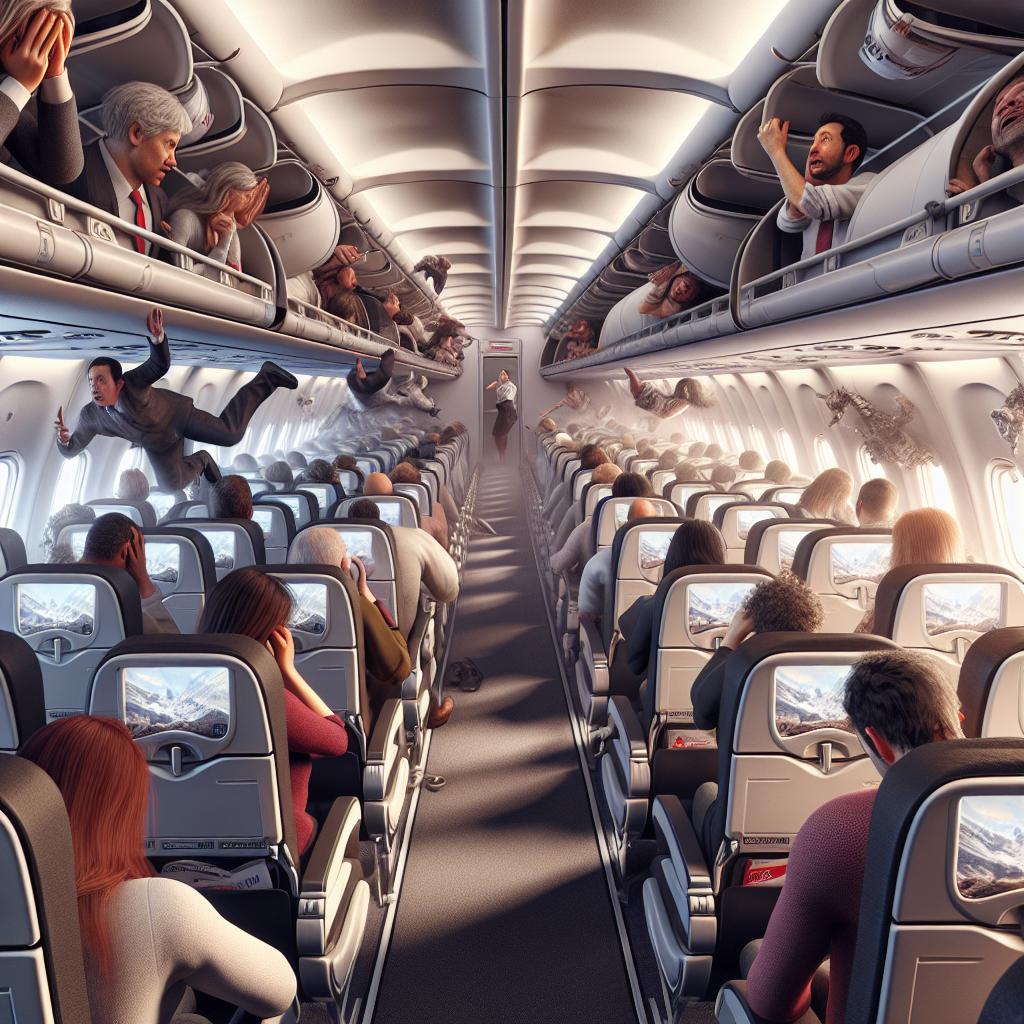Passengers Diverted to Memphis After Wild Turbulence Experience
MEMPHIS, Tenn. – What was supposed to be a straightforward flight from Cancun, Mexico to Chicago, took a chaotic turn on Wednesday as United Airlines flight 1196 encountered severe turbulence, prompting an emergency landing in Memphis. Passengers are now sharing their nerve-wracking experiences of the unexpected detour.
“I thought we were landing,” recounted passenger Tyeisha Jefferson. “At one point, I raised the blinds thinking, ‘No, we’re not landing yet. Grab hands and pray to Jesus. Lord help us.’” In such moments of fear and uncertainty, passengers turned to their faith, hoping for a safe resolution.
The turbulence on this flight was severe enough that the Federal Aviation Administration (FAA) has decided to investigate the incident. The troubles hit as the Boeing 737 flew over Louisiana, leaving the crew and passengers in a state of shock. “We started in turbulence, and then we literally hit the worst air pockets there were, so the flight attendant almost hit the ceiling,” shared Patrick Froh, painting a vivid picture of the tumultuous scene. “People were really hurt. We have stains all over our clothes because of food going everywhere. The ceiling is covered with food. It was one of the most traumatic things to be on a flight for.”
With a total of 179 people on board, including the crew, the flight saw multiple injuries. Reports indicated that at least one passenger was taken to the hospital due to the severity of the turbulence. It was a tough moment for everyone on board, witnessing trays of food flying and the interiors becoming damaged alongside terrified passengers clinging to their seats.
According to experts, such incidents are becoming more frequent as conditions in the atmosphere change. Dr. John Knox, a professor of Geography and Atmospheric Science at the University of Georgia, noted that there are two types of turbulence: one caused by thunderstorms and another known as clear-air turbulence occurring when planes are cruising. While both types are rare, they seem to be increasing—likely due to climate change. “Because it’s rare, but it’s increasing, this is important for pilots, for airlines, for passengers, and also for the companies that make airplanes,” Dr. Knox stated.
With changing weather patterns likely to contribute to more turbulence in the future, Dr. Knox emphasized the importance of designing airplanes that can better handle these conditions. “They have to take into account that those severe events, which were extremely rare, are going to become a little bit more common, and that actually will influence how they design airplanes,” he added.
Once the plane made its emergency landing in Memphis, passengers were relieved to be back on solid ground. Many of them expressed gratitude that the situation, although alarming, didn’t end in worse outcomes. After a brief stopover, passengers finally arrived at Chicago O’Hare International Airport about four hours later than planned, many looking forward to returning home.
“I travel a lot,” mentioned Gustavo Nouel. “But in my 22 years, I’ve never had a flight like this.” The experience left its mark, and even seasoned travelers like Nouel found themselves shaken by the unexpected turbulence.
In the wake of such incidents, it’s crucial for airlines to review their operational protocols and ensure that all passengers and crew are prepared for potential turbulence. Safety training and ongoing communication are essential to help mitigate fears during flights and ensure that passengers know best practices in the event of an emergency.
The turbulence experienced by United Airlines flight 1196 isn’t an isolated event; people flying in various parts of the country have reported similar situations this year, leading to heightened conversations about flight safety and climate-related changes in air travel.
As passengers process their experiences, they are left with stories to tell and memories that may last a lifetime. The hope is that ongoing research and awareness can lead to better safety measures and design improvements in aircraft to accommodate future challenges as the skies become more unpredictable.
To everyone aboard flight 1196, the experience was certainly a frightening tale, one of turbulent skies and unexpected landings—yet, they are thankful to have landed safely and to share their stories of survival and resilience.







